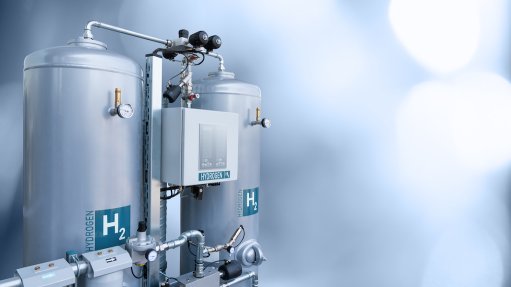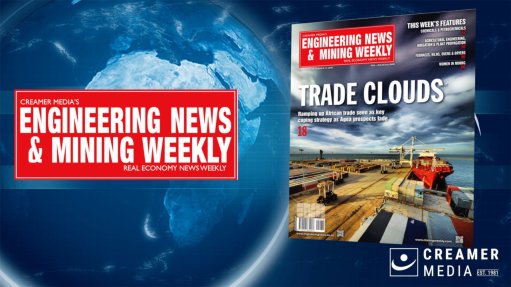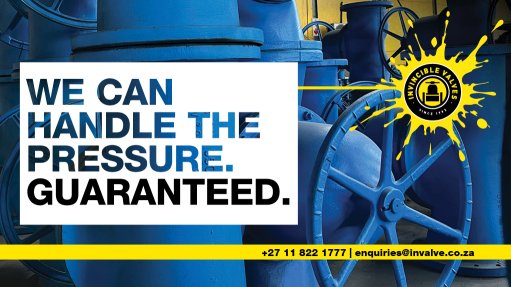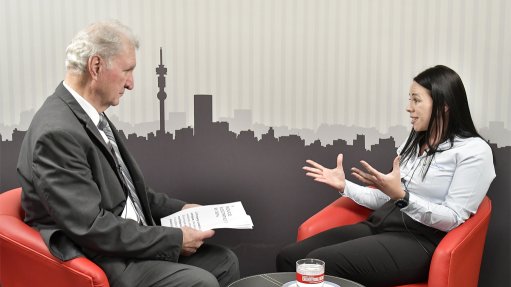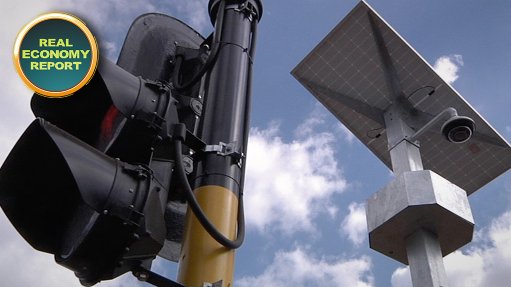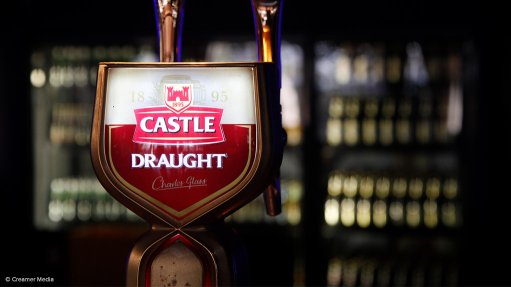Lotus intersects some of the thickest continuous zones of mineralisation to date
ASX-listed Lotus Resources has reported that its latest drilling has intersected some of the thickest continuous zones of mineralisation to date, with this thicker mineralisation starting as shallow as 8.2 m.
This comes as the company reports results from a further 35 holes drilled at its large-scale Letlhakane uranium project, in Botswana, with 134 reverse circulation (RC) holes and ten diamond core holes now reported.
Letlhakane’s recently revised mineral resource estimate (MRE), constrained by pit shells based on reasonable prospects of eventual economic extraction, is 155.3-million tonnes at 345 ppm triuranium octoxide (U3O8) for 118.2-million pounds of U3O8, of which 34.4-million pounds are indicated resources.
Lotus notes that diamond drilling at Serule West is complete and has started at Gorgon West to obtain samples for metallurgical testwork and quality assurance and quality control (QAQC) assaying.
The company says additional infill drill holes have intersected mineralisation, confirming continuity and grade as Lotus aims to upgrade the classification of the Letlhakane MRE.
The company says drilling is on track to be completed in September, with an updated MRE to be completed during November.
It notes that exploration drilling has now begun in the western portion of the mining lease, testing historical intercepts outside the defined resources.
Scoping level study for Letlhakane remains on track for delivery in the first half of September.
Moreover, Lotus says it is progressing Letlhakane development in parallel with restarting uranium production at Kayelekera in Malawi.
Lotus CEO Greg Bittar says out of 144 holes reported, 141 have intersected uranium mineralisation, confirming the continuity and grade. He adds that the company has intersected the thickest continuous zones of mineralisation seen so far at the deposit, including 26.1 m at 265 ppm.
Meanwhile, he notes that the company continues to intersect narrow high-grade lodes within these broader mineralised zones, with the latest intercepts grading up to 2 053 ppm eU3O8, more than six times the current resource grade.
“Diamond drilling at Serule West is complete and we are now drilling at Gorgon West for further QAQC validation as well as samples for the metallurgical testwork programme to optimise Letlhakane’s processing flowsheet. We have commenced a small exploration drilling programme in the west of the mining lease to test a new target outside the current resource envelope,” says Bittar.
LETLHAKANE DRILL PROGRAMME
Lotus’ drill programme is primarily aimed at upgrading inferred resources currently contained within Letlhakane’s MRE – 71% – to indicated and measured status.
The company says the bulk of the inferred resources lie within the Gorgon West and Serule West areas, the main targets for the drill programme.
To date, 134 RC holes and ten diamond core holes have been completed, totalling 9 905 m for an average hole depth of 70 m. All holes were drilled vertically, perpendicular to the near-surface flat-lying uranium mineralisation horizons.
The infill drill programme is expected to be completed in September, with the new results incorporated into an updated MRE to be delivered during November.
The bulk of the infill drill programme at Serule West and Gorgon West has now been completed with only nine diamond holes left to drill at Gorgon West.
Gorgon West is the largest of the areas that make up the Letlhakane deposit and intercepts are typically thicker, with individual intercepts up to 26 m thick and zones of multiple intercepts up to 60 m thick.
Uranium grades at Gorgon West are generally lower compared with Serule West but also contain some narrow high-grade zones within a lower grade halo.
Lotus completed ten diamond holes totalling 566 m at Serule West. Mineralised intervals in the cores will be assayed to confirm the down-hole gamma logging results, as well as provide samples for metallurgical testwork.
The samples will be submitted to an accredited laboratory along with certified reference materials, duplicates and blanks to meet Lotus’s internal QAQC requirements and those of the Joint Ore Reserve Committee Code.
The company says RC rigs are now drilling at an exploration target near the west edge of the mining lease, close to widely spaced – 400 m – historical holes that intersected anomalous uranium mineralisation.
Uranium intercepts for the latest 25 RC drill holes at Gorgon West and ten diamond holes at Serule West have been calculated from down-hole gamma survey data.
Intercepts for the first 109 holes drilled in this programme were reported in June, July and August.
All but three of the 144 drill holes completed to date have intersected uranium mineralisation and confirm the continuity and grade of the deposit.
The drill holes for Gorgon West have shown some higher-grade zones within a thicker, lower grade halo. Most holes have returned multiple – three to ten – uranium intercepts within the zone of mineralisation.
Comments
Press Office
Announcements
What's On
Subscribe to improve your user experience...
Option 1 (equivalent of R125 a month):
Receive a weekly copy of Creamer Media's Engineering News & Mining Weekly magazine
(print copy for those in South Africa and e-magazine for those outside of South Africa)
Receive daily email newsletters
Access to full search results
Access archive of magazine back copies
Access to Projects in Progress
Access to ONE Research Report of your choice in PDF format
Option 2 (equivalent of R375 a month):
All benefits from Option 1
PLUS
Access to Creamer Media's Research Channel Africa for ALL Research Reports, in PDF format, on various industrial and mining sectors
including Electricity; Water; Energy Transition; Hydrogen; Roads, Rail and Ports; Coal; Gold; Platinum; Battery Metals; etc.
Already a subscriber?
Forgotten your password?
Receive weekly copy of Creamer Media's Engineering News & Mining Weekly magazine (print copy for those in South Africa and e-magazine for those outside of South Africa)
➕
Recieve daily email newsletters
➕
Access to full search results
➕
Access archive of magazine back copies
➕
Access to Projects in Progress
➕
Access to ONE Research Report of your choice in PDF format
RESEARCH CHANNEL AFRICA
R4500 (equivalent of R375 a month)
SUBSCRIBEAll benefits from Option 1
➕
Access to Creamer Media's Research Channel Africa for ALL Research Reports on various industrial and mining sectors, in PDF format, including on:
Electricity
➕
Water
➕
Energy Transition
➕
Hydrogen
➕
Roads, Rail and Ports
➕
Coal
➕
Gold
➕
Platinum
➕
Battery Metals
➕
etc.
Receive all benefits from Option 1 or Option 2 delivered to numerous people at your company
➕
Multiple User names and Passwords for simultaneous log-ins
➕
Intranet integration access to all in your organisation







